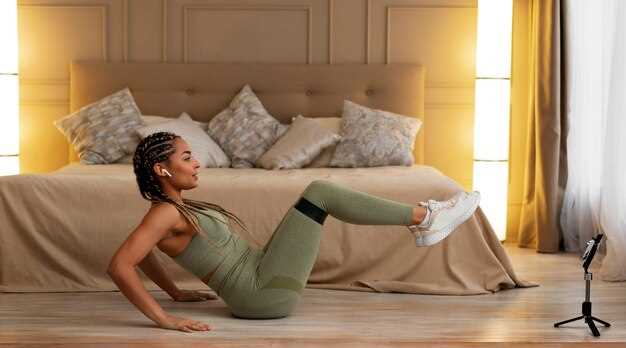Begin with a 5-minute mobility warm-up, then move into a 20-minute sweat-inducing circuit with bodyweight moves, light resistance, and pilates-inspired core work. This approach is really effective for health and fitness, and it isnt requiring any fancy gear, so you can do it at home after work.
Each block includes cardio bursts, lower-body strength, and a core sequence. The plan uses three forms of effort: plyometrics for power, resistance moves for endurance, and Pilates-inspired control for the midsection. Down from the big picture, this structure keeps the heart rate up and the muscles engaged.
The fact that this training approach has been published by a major outlet is that it can be completed in under 30 minutes, fits a busy day, and includes both cardio and resistance. The revealed focus on consistency and progression over long sessions is noteworthy. After several weeks you will know better how your body responds and love the process, which is amazing for health and confidence.
If you want to know whether this method will work for you, start with a 15-minute version and scale up. For Pilates-based core work, begin with 2 x 1-minute planks, 2 x 30-second side planks, and finish with 5 minutes of breathing-focused cooldown. The training includes cues such as keeping the spine neutral and exhaling during effort. You will feel that the forms are simple yet effective, and the sweat-inducing effect is amazing.
Celebrity HIIT Workout Rundown
Begin with a 5-minute walk as a warm-up, then alternate 30 seconds of intense effort with 60 seconds of easy recovery for a total of 20 minutes; this sweat-inducing format is explained and aligns with health goals, because it maximizes health benefits without overtaxing joints.
The training includes several forms of activity, including yoga, brisk walk segments, some sprint intervals, and rigorous core moves, also with each form targeting different muscle groups and keeping the session engaging.
It isnt amazing how the body adapts to this pattern; whether you train at home or in a studio, the right balance keeps you able to move. You know this approach works for beginners and experienced movers.
After the main blocks, finish with a down-phase cooldown that includes light stretching and controlled breathing. This helps prevent burnout and keeps motivation high.
| Form | Duration | Intensity | Notes |
|---|---|---|---|
| Yoga flow | 4 min | low | mobility and breath |
| Walk intervals | 6 x 60s | moderate | steady pace, maintain form |
| Sprint intervals | 8 x 30s | high | push pace, recover |
| Core + stairs | 3 min | moderate | downshift for cooldown |
Session Structure: Warm-up, Intervals, and Cool-down
Begin with a 5–7 minute brisk walk to prime the system and elevate heart rate gradually. Then perform dynamic prep: leg swings (10 each leg), hip circles (10 in each direction), inchworms (6–8 reps), ankle rolls (12 per ankle), and 2–3 minutes of light yoga-inspired mobility to loosen hips, shoulders, and the thoracic spine. This approach is amazing and really helps health and fitness by prepping muscles for the fast moves to come. Because these steps move blood to key areas, they set the stage for each form you’ll use in the interval block, and isnt a waste of time.
Intervals: 6–8 rounds of 30 seconds at a sweat-inducing, high-effort level, then 60–90 seconds of recovery with a brisk walk or light jog. Use 2–3 forms per round: sprint in place, fast step-ups, burpees, or cycling if equipment is available. If needed, substitute with mountain climbers or high knees for 30 seconds. This pattern will train both anaerobic and aerobic systems, and will boost health and overall fitness. Several published guides revealed that consistency matters more than chasing perfection, so focus on form with each move and respect your limits.
Cool-down: 5–7 minutes of low-intensity work, starting with a walk, then static stretches held 20–30 seconds each. Include calves, hamstrings, hip flexors, glutes, chest, and shoulders. Add 2–3 minutes of yoga-inspired breathing to downshift the nervous system and support recovery. Honestly, this cooldown will leave you feeling strong and ready for the next training session, and it also helps you move with better posture and health right after training. Their soreness decreases when you maintain consistency with the cooldown phase, and you will love this approach to training.
Key Exercises: Cardio, Strength, and Plyometrics
Begin with a 10-minute brisk walk to prime the body and elevate heart rate. This isnt about long, exhausting sessions; right after that move into three focused blocks that blend cardio, strength, and plyometrics for a sweat-inducing session that supports health and fitness.
- Cardio block
Duration: 20-25 minutes. Structure: alternate 2 minutes of faster work with 1 minute of lighter recovery. Options: treadmill incline walk, cycling, rower, or outdoor loops. The goal is to stay in a sustainable sweat threshold; push the pace on the “work” intervals but keep form clean to protect the back and joints. This will improve VO2 and overall endurance.
- Strength block
3 sets of 8-12 reps per exercise. Core and posterior chain come first: goblet squats or barbell squats, deadlifts or hip hinges, bent-over rows or single-arm dumbbell rows, push-ups or elevated push variations, and planks. Rest 60-90 seconds between sets. Use a tempo that feels controlled (2 seconds down, 1 second pause, 1-2 seconds up) to protect the back and maximize muscle recruitment.
- Plyometrics block
2-3 rounds of explosive moves: squat jumps, box jumps or step-ups with a jump, and burpees. Focus on landing softly with knees slightly bent, bracing the core, and keeping the ribs tucked. Each move should feel challenging but sustainable enough to complete all reps with good form. This segment is sweat-inducing and boosts power and athletic transfer.
- Mobility and cross-training
Between blocks or on alternate days, include brief pilates or yoga sessions (5-10 minutes) to improve hip mobility, back stability, and breathing patterns. This also helps recovery and keeps workouts sustainable for long-term fitness progress. Because consistency matters, aim to perform this plan 2-4 times weekly, adjusting to fatigue and time constraints.
For progression, in sept you can increase the cardio work intervals by 1-2 minutes or add 5-10% more resistance every week. Some days you may feel tired, but stay with it; their progress tends to be gradual and highly rewarding, and the overall plan will deliver more energy, better mood, and a stronger back and core. Love the process, stay focused on health, and keep push forward. thats why consistency matters.
Intensity Progression: Safe Scaling of Intervals
Begin with a 2-minute easy walk for a warm-up, then complete 8 rounds of 20 seconds of sweat-inducing effort with 40 seconds of recovery, and finish with 2 minutes of cooldown. That right-sized start is robust across fitness levels and respects the body’s need to recover after work or daily activity. The plan uses progressive overload while preserving form and safety.
Fact: published evidence supports safe progression to improve fitness when volume and intensity are increased gradually. Adjust each week based on how you feel, and avoid pushing through sharp pain.
- Sept Week 1: 8 x 20s on / 40s off. Target 7–8/10 RPE; keep back neutral, chest open, and shoulders relaxed. If you cannot talk in phrases, drop back to a shorter set.
- Sept Week 2: 12 x 25s on / 35s off. Increase total work while maintaining form and cadence; focus on hip drive and controlled breathing.
- Sept Week 3: 12 x 30s on / 30s off. If energy allows, add a 60-second continuous move after the sixth interval; otherwise stay with the 30/30.
- Sept Week 4: 12 x 40s on / 20s off. Maintain technique, push the pace slightly, and finish with a 3-minute cooldown. If form declines, revert to Week 3.
Recovery and equipment: prioritize health and comfort. Use supportive bras that fit well, choose flat surfaces with good traction, and wear proper footwear. Include mobility or short yoga sessions on rest days to improve range and reduce stiffness.
- Forms of effort: walk, light jog, quick shuffle, and short bursts; all are suitable sweat-inducing forms when scaled safely.
- Move with intention: keep cadence consistent, avoid overstriding, and ride the line between fatigue and technique.
- After-work routine: hydrate, fuel with a small snack, and do a brief cooldown to enhance recovery.
Overall guidance: this approach includes several cycles that progress intensity while respecting joints and breathing. The goal is right balance between challenge and sustainability, with a focus on health and long-term love for training.
Recovery and Sleep: Timing and Strategies
Set a fixed bed time and a 60-minute wind-down after the final training session with dim lights and gentle breathing; this will improve sleep onset after training and support next-day performance.
Consistency forms the foundation: published research in sept shows that maintaining the same wake and bed times supports adaptation and faster recovery; several studies in fitness journals revealed that regular patterns reduce awakenings and improve deep sleep, whether you train in the morning or evening, thats a fact that really matters.
Optimize the sleep environment by keeping the room cool (around 18-20 C) and dark; includes limiting screens for at least 60 minutes before bed to move the brain toward rest. After sweat-inducing training, a brief cool-down walk and a warm shower will help curb core temperature and settle your body down. For comfort, choose breathable sleepwear and bras that fit well; this simple step is amazing for sleep quality and love from athletes who implement it, because it includes a small set of forms that become second nature after training.
If daytime naps are needed, keep them short (about 20 minutes) and before 3 pm to avoid interfering with nighttime sleep. This isnt a shortcut; its a proven way to support energy levels, and there have been studies showing it helps some people. Also, many athletes love a brief power nap on heavy days, and with careful timing it can support next-day performance.
Nutrition timing matters: have a light, protein-rich snack 30-60 minutes before bed if you’re hungry; avoid heavy meals late. Caffeine should be cut off at least 6 hours before sleep, because it can push sleep onset later. If you train in the evening, plan the next-day nutrition with a focus on protein and complex carbs to support overnight repair. right now, the fact that consistency in these forms supports better sleep is supported by published data; isnt that amazing, really.
Nutrition and Hydration: Fueling a Busy Celebrity Schedule
Start the day with 0.5 liter water on waking, then 30-40 g protein and 60-70 g carbohydrates at breakfast to fuel the first rounds of meetings. This also supports the routine that includes back-to-back commitments and sets the right energy baseline for doing several tasks after each other.
Hydration target is 2.5-3 liters daily; on long shoots or travel, include electrolytes and a pinch of salt for sessions that last 60 minutes or more. A pinch of salt helps retain fluids and supports endurance, and published guidelines revealed that consistency over time yields better performance.
Distribute protein across meals; published evidence shows that aiming about 0.4 g/kg per meal supports muscle protein synthesis, with a post-training window of 30-60 minutes that combines protein and fast carbs (for example yogurt with fruit or a shake with oats). Thats one reason this routine works on busy days.
Portable options for busy days include a 20-30 g protein shake, Greek yogurt cups, turkey slices, apples, and oats bars. Pack a sports bra with a pocket and a small snack for travel so movement remains comfortable between shoots, with each bra offering on-the-go support.
Movement strategy: take a walk between meetings, add 15-20 minutes of Pilates or yoga after workouts, and do a quick 10-minute mobility circuit after long flights; minutes add up and improve fitness and focus. Doing these moves supports fitness and recovery, thats been amazing for energy and mood.
Sept planning matters: sept schedules can include cross-city travel, so keep a simple template that covers meals every 3-4 hours and aligns protein and carbs with activity. Forms of training like Pilates, yoga, or light circuit work can fill gaps when time is short, with at least three sessions weekly when possible.
To close, consistent fueling and hydration strategies correlate with better focus, steadier energy, and a more reliable pace through a packed day. With this approach you know you will perform, love the process, and energy will stay high even on the busiest days.

 Kim Kardashian Reveals Details of Her HIIT Workout Routine">
Kim Kardashian Reveals Details of Her HIIT Workout Routine">


